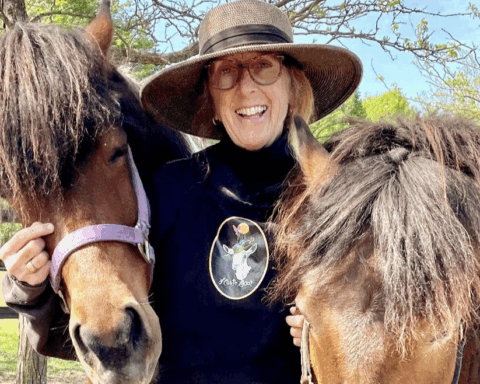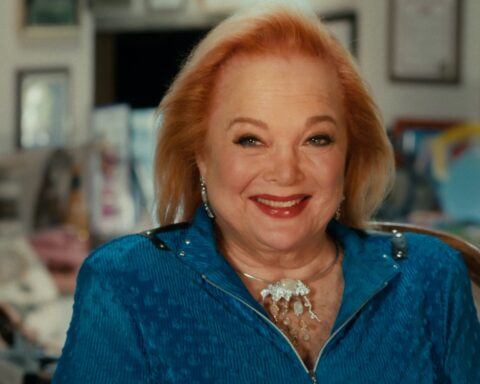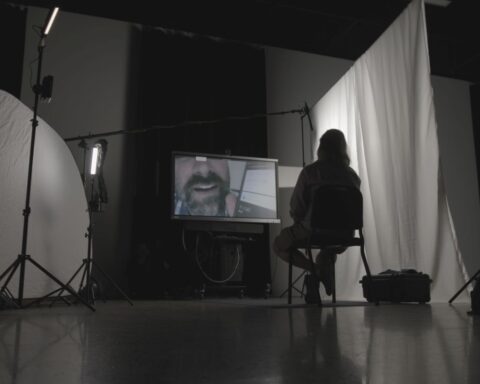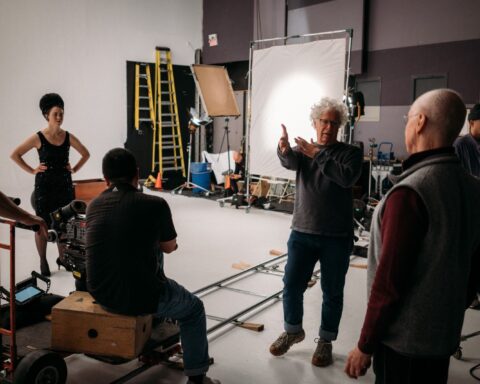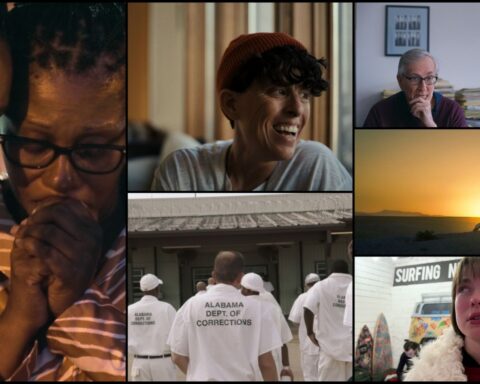Listen to Me Marlon
UK, 102 min.
Directed by Stevan Riley
Canadian Premiere
Much of the information in Stevan Riley’s biodoc about Marlon Brando, Listen to Me Marlon, is available elsewhere. But Riley conveys it with such poetic imagination that it recalls T.S. Eliot’s line about Lazarus returning from the dead: “to tell you all, I shall tell you all.” In Riley’s movie, Brando tells all in a nonstop, voiceover interior monologue culled from 200 hours of audiotape he recorded, perhaps late at night, in his home on Mulholland Drive.
The picture opens on a digitization of Brando’s face floating in black limbo, resembling a classical bust. An experiment he participated in, it’s a spectral image that induces, along with the intimacy of his voice, a spooky sense that he is with us.
Eschewing the usual interviews with industry people, friends, relatives, and professional analyzers, this biodoc provokes a stream of insights into a uniquely gifted man and the gallery of characters he created. When we hear him speaking Macbeth’s best known lines near the beginning of the film, we link up with his deepest drives. Brando needed meaning, substance, and connection. He craved love. The horror was life as a “a poor player that struts and frets his hour upon the stage, a tale told by an idiot.”
The drive to live animated Brando’s passions, including his need to flirt playfully with pretty women and get them as naked and abandoned as his Tahitian dream girls. “The penis has its own agenda,” he laughs with that special Brando beam of delight.
Over pans of normal house clutter and framed photos, Brando talks about struggling for sanity and being haunted by anger and confusion. At the same time, scene after scene depicts him as a freedom-loving, curious, and sensitive man who often transposed who he was into his best roles. In a lyrical passage about the soft green trees that he loved in Omaha, his childhood home, you think of Colonel Kurtz, his doomed Apocalypse Now character’s yearning memories of sweet gardenias along the Ohio River.
For Brando, Tahiti was the sweetest of all escapes from the bullshit and ugliness he saw in western society. He says that watching Tahitians was like watching the moon, palm trees, “unanalyzed expression.” He bought an atoll called Teti’aroa, evoked in the doc with stills and home movies, and Brando’s voiceover saying that in reality, he paid for the “privilege of being with those people.”
Tragically, his daughter Cheyenne hung herself there five years after her half-brother Christian killed her Tahitian lover. Brando’s devastation, which is hard to watch, anticipates the broken character he played in Last Tango in Paris. Bernardo Bertolucci, he lets us know, wanted the actor to play himself, “and every day we went in deeper.”
Brando hit the road for New York City on the cusp of the Beat Generation era. In Manhattan, he studied acting and spent a lot of time watching people’s faces, mannerisms, and behaviour. This pleasurable fascination must have opened him up to the amazing varieties of human beings and contributed to the way he could sink deep into characters like Terry Malloy in On the Waterfront and The Godfather’s Don Corleone.
Throughout the doc, we get access to Brando’s comments about these characters and the production of the movies they appeared in. Although he eventually disparaged acting, and kept repeating the refrain that even a hungry cat pretending to love you is an actor, Brando also loved the profession. After nightly performances in A Streetcar Named Desire, the play that rocketed him to the fame, he “felt like a million bucks.”
Footage from Elia Kazan’s movie adaptation of the play, juxtaposed with Brando recalling his parents, yields one of the doc’s most powerful moments. In the voiceover, Brando confesses that he hated his Streetcar character, Stanley Kowalski, and of course he hated his father. On screen, the method actor trained to work with his personal emotions, is terrifying as Stanley viciously attacking Vivien Leigh’s Blanche DuBois, a woman as hypersensitive and flawed as his mother.
We get a sharply focused, emotionally charged view of an actor using the method to create. Brando was unleashed as he incarnated his father’s rage, and perhaps exorcised the demon by playing it out. Later in his career, after taking on iconic rebel parts, he often aimed at divining warmth and gentleness in ostensibly evil characters: notably the Nazi soldier in The Young Lions and the Godfather, who he saw as a “family man.” As for the string of mediocre films he performed in, Brando had a special disdain for Chaplin’s The Countess from Hong Kong, which is encapsulated by some awkward slapstick he tried to play with Sophia Loren.
During long absences from movie acting, Brando connected more deeply with the causes of victimized people he had long supported, particularly Native and African-Americans. His admiration for Martin Luther King, who “was not afraid to die,” and his “hatred of people trampling on other people” sum up the defiant, empathetic Brando at the heart of Listen to Me Marlon. In his acutely intimate film, which lets us in on aging, grossly overweight Brando trying to hypnotize himself into fat loss, Riley wants us to experience his subject’s many dimensions from sublime to ridiculous, and grant him love and respect.
Hot Docs 2015 Screenings
Fri, May 1 10:30 AM
Isabel Bader Theatre
Sun, May 3 6:45 PM
The Regent




